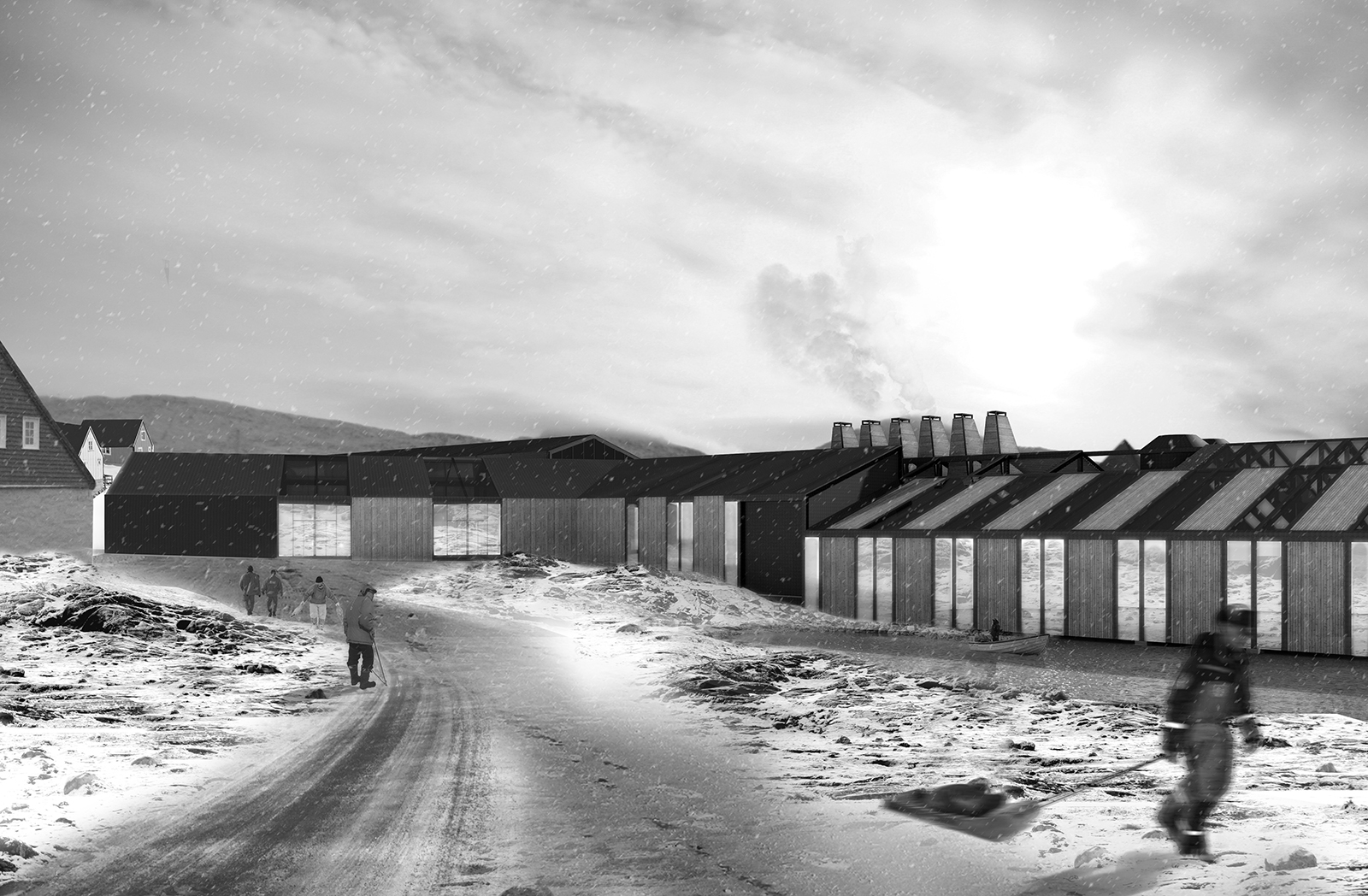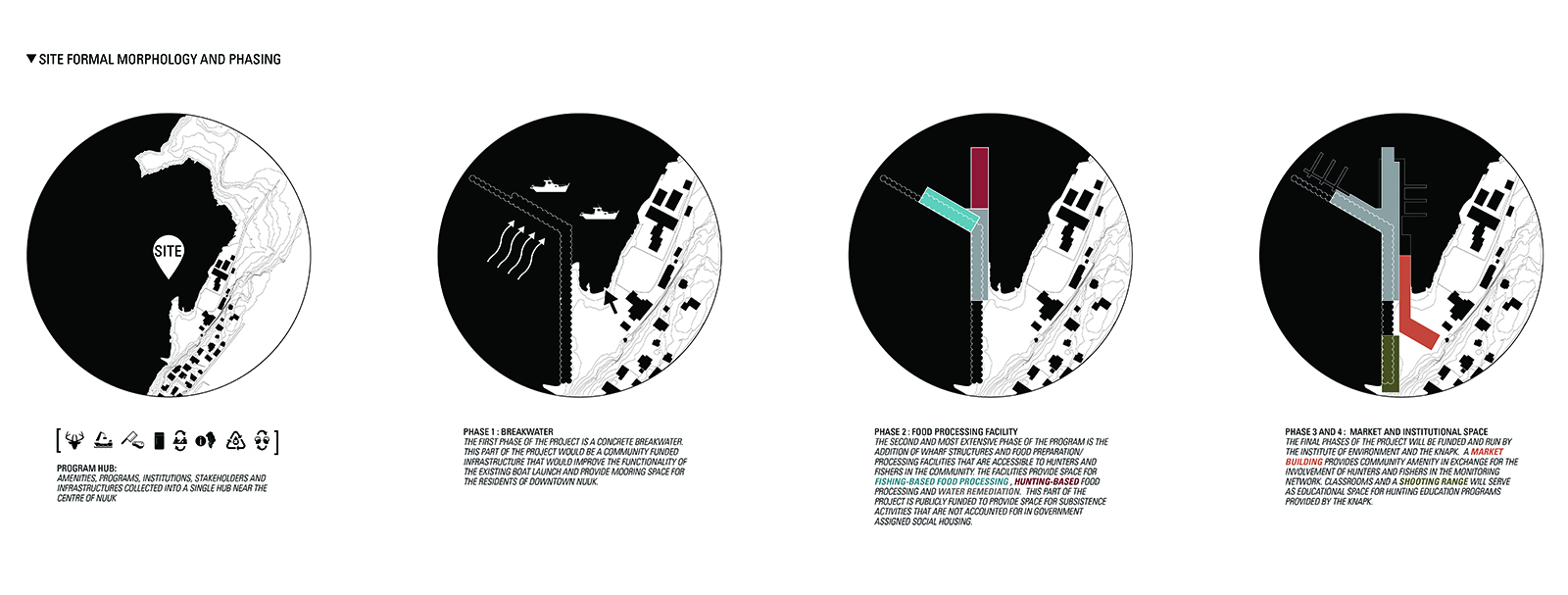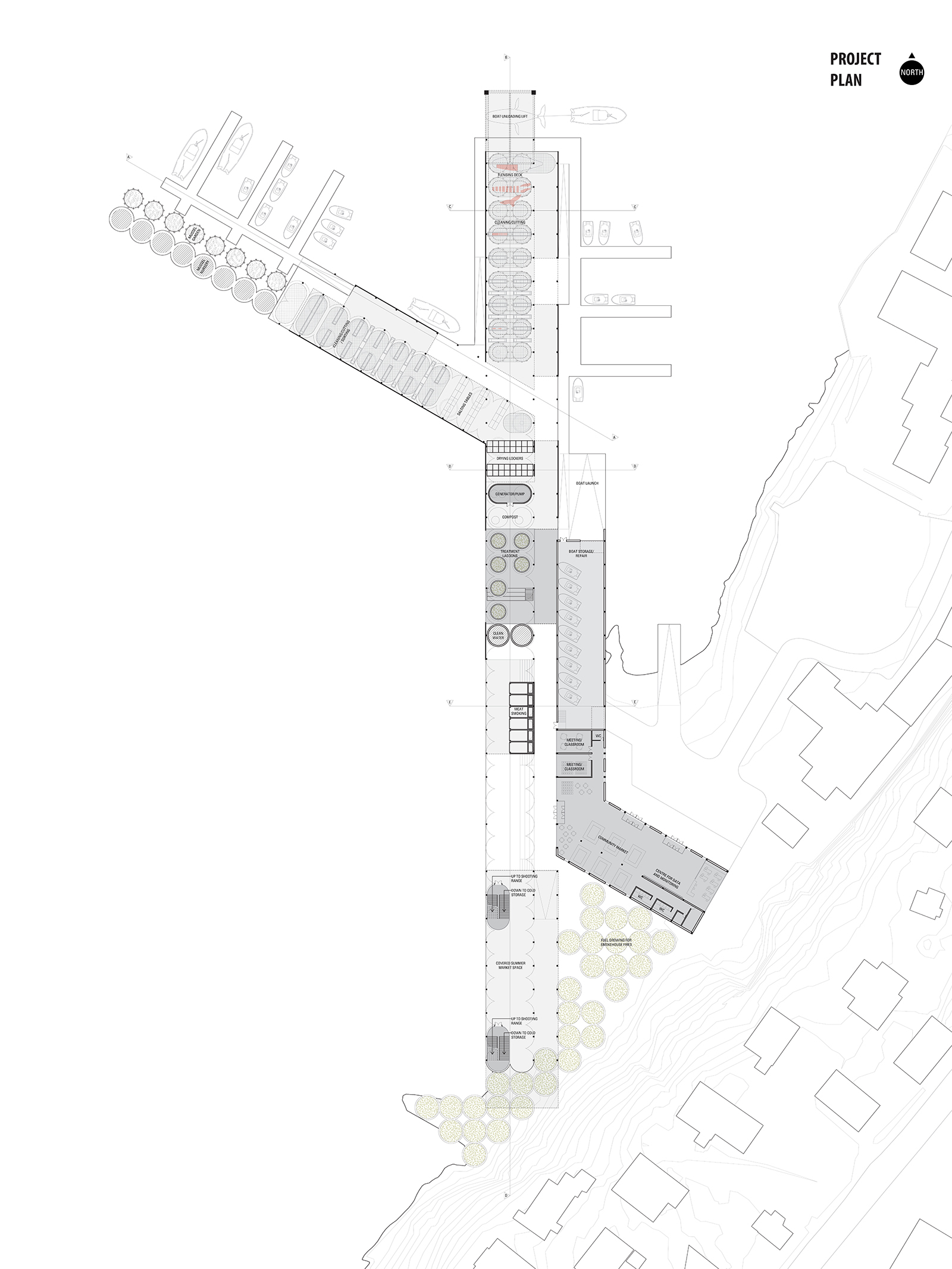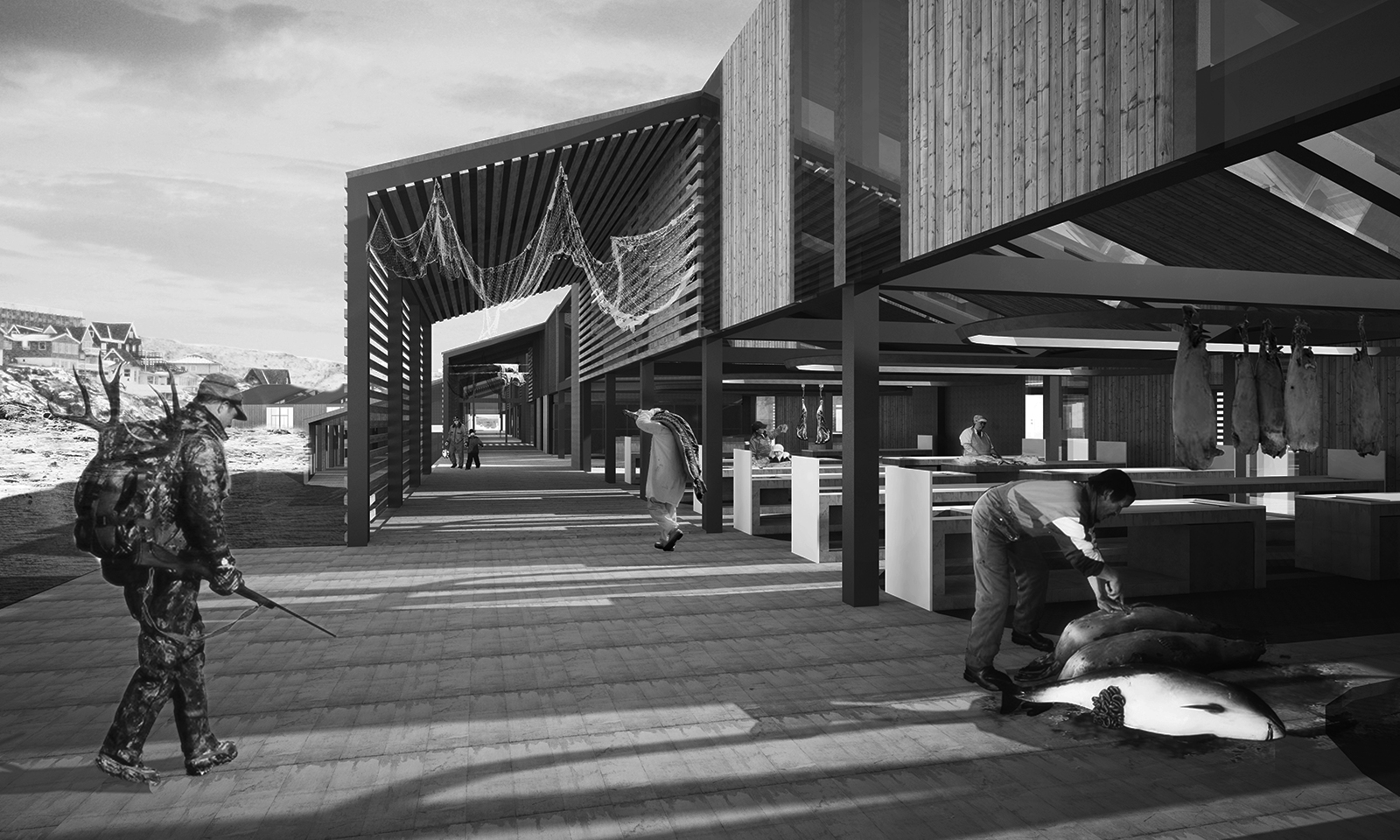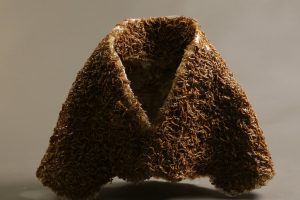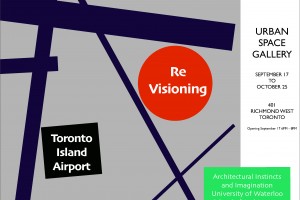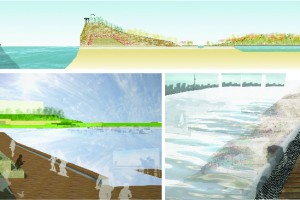Catch Process Exchange Greenland
Jessie Croll & Dave Holborn
for Lola Sheppard’s 3B Option Studio 2013
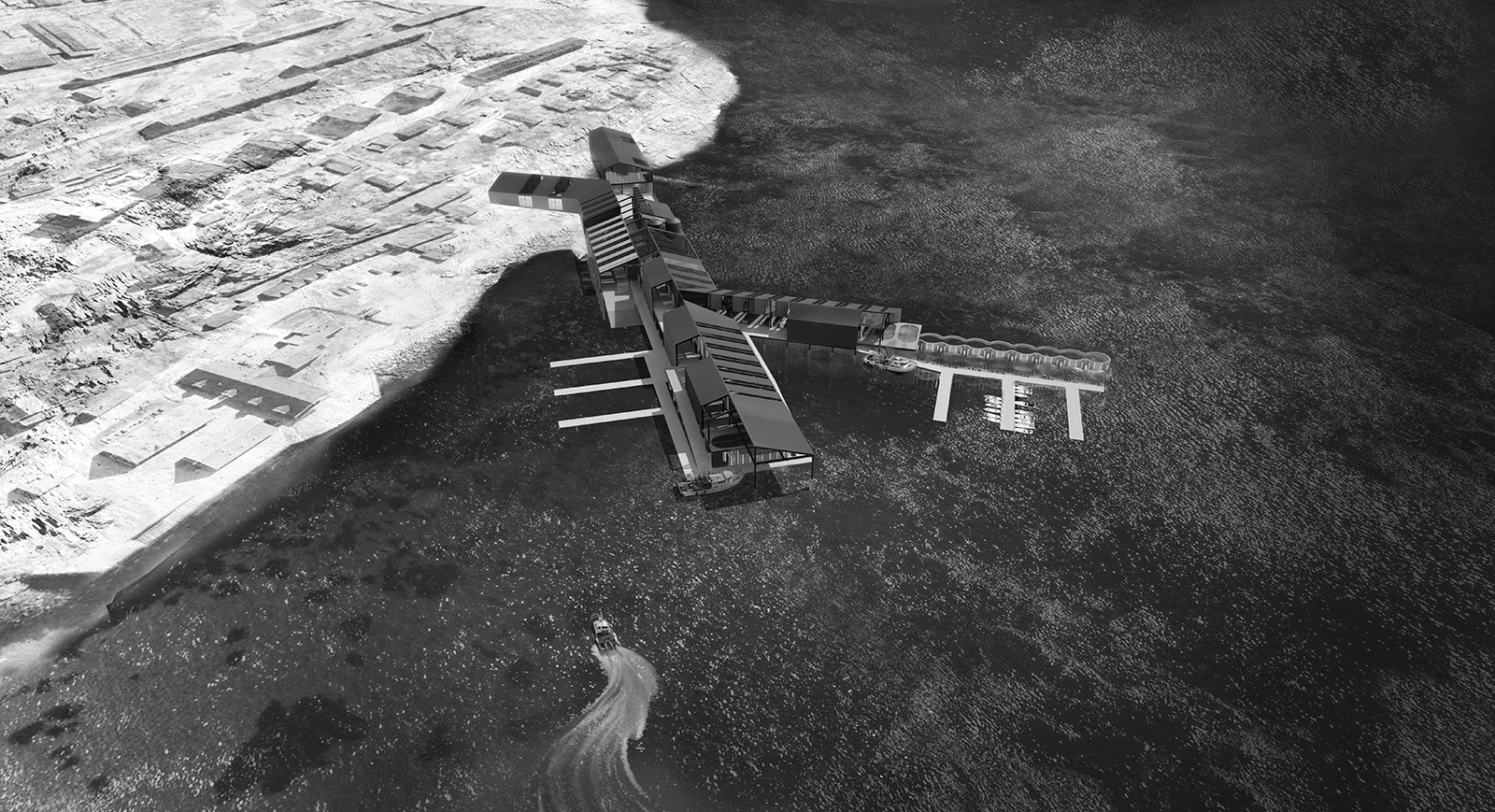
Context
Although local meat and fish is the most important part of the Greenlandic diet, the local food system is far from perfect. Lack of food cleanliness at the old Nuuk market caused the introduction of regulations and the movement of local meat sales to the new market in the centre of the city, known to locals as ‘The Board’. Unfortunately, these regulations caused hikes in food prices and failed to acknowledge the DIY spirit of the community. Since the market administrators have no way of regulating the steps between hunting and a consumer product, hunters are unable to sell their processed meats and fish at the market. Like the rest of the city, the board lacks the feeling of social and cultural gathering. As a newcomer to Nuuk, it can be difficult to find your way into the hunting and fishing community without a central meeting point in the community. The Board isn’t much help either, as it lacks the hunter-to-consumer exchange that the old market allowed.
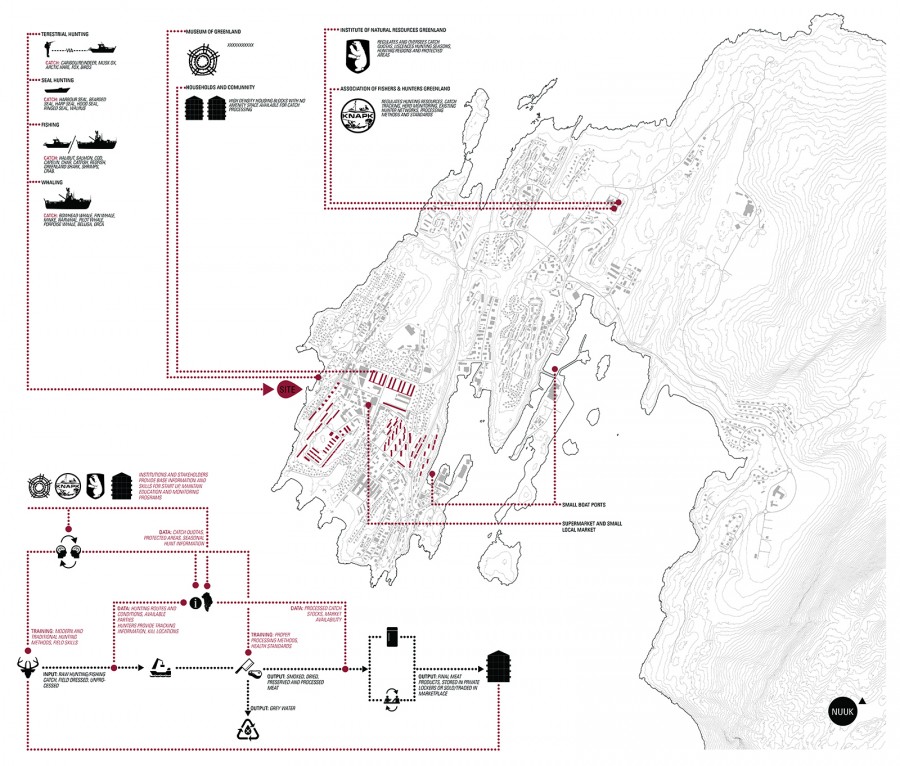
Proposal
As populations in Nuuk increase, due to new industries and centralization, the need to regulate hunting, fishing and hygiene becomes more prevalent. The new population needs the education and amenity space to allow local food culture to evolve for the metropolis in a positive way. We are proposing a complex that will incorporate programs from the association of Fishers and Hunters in Greenland and the Institute of Natural Resources’ Department of Fishing and Hunting. The new institute would not only act to regulate and educate to ensure safe and sustainable practices, but would also act as the hub for the larger network of hunters and households.
The selected site is located in the historic colonial port district of Nuuk, just a short walk from the city centre and many housing projects. The focus of the complex is a food-processing infrastructure that supports the individual hunter/fisher with the space provided to work/hang/fillet/smoke/store/preserve his or her catch in a way that facilitates healthy and hygienic trade and consumption. Additionally, the complex is responsible for the treatment and reuse of grey water that results from the butchering process through a system of anaerobic treatment tanks, which produce the fuel required to run the system, and a water remediation greenhouse that doubles as a learning/working space. A mussel farm is incorporated into the intertidal structure of the project as a means of improving the local water quality by absorbing some of the additional nutrients that result from the waste treatment process.
Program Phasing
The first phase of the project is a concrete breakwater. This part of the project is a community-funded infrastructure that improves the functionality of the existing boat launch and provides mooring space for the residents of downtown Nuuk. The Second and most extensive phase of the program is the addition of wharf structures and food preparation/processing facilities that are accessible to hunters and fishers in the community. The facilities provide space for fishing-based food processing, hunting-based food processing and water remediation. This part of the project is proposed as a publicly funded amenity with the goal of providing space for subsistence activities that are not accounted for in much of Nuuk’s existing social housing. The final phases of the project are a market building and a shooting range that will act as the primary space for institutional activities and the connection between the community and the food program.
